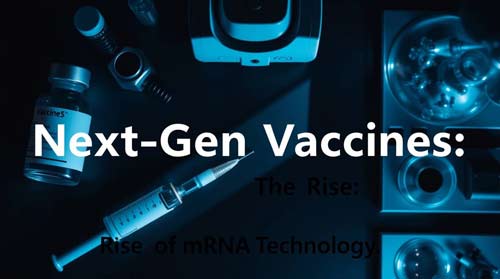Next-Gen Vaccines The Rise of mRNA Technology Beyond COVID-19
Please like and subscribe if you enjoyed this video 🙂
Abstract
Messenger RNA (mRNA) vaccine technology, which gained widespread recognition during the COVID-19 pandemic, is now being explored for broader medical applications. This article explores the current state of mRNA vaccine research. It highlights how mRNA vaccines are better than traditional methods. The piece also considers their potential to fight diseases such as cancer, autoimmune disorders, and rare genetic conditions. It also highlights existing challenges in implementation and the evolving outlook for this transformative technology in global health.
Introduction
The emergence of COVID-19 brought mRNA vaccines to the forefront of medical innovation, showcasing their ability to be rapidly developed and effectively deployed. This success sparked great interest in mRNA technology for other essential health issues. This article gives a detailed overview of mRNA vaccine development beyond COVID-19. It explores current uses, possible benefits, ongoing challenges, and future possibilities.
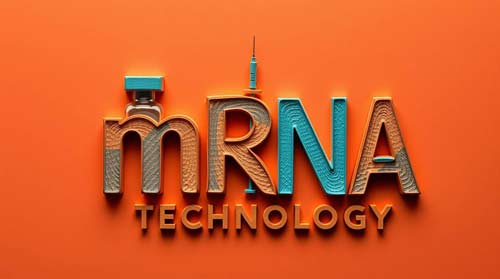
Background on mRNA Technology
mRNA vaccines function by delivering synthetic genetic instructions to the body’s cells, prompting them to produce a specific protein associated with a pathogen. This protein is typically a harmless part of the virus or bacterium. It helps the immune system respond, teaching the body to identify and fight the real pathogen if it comes into contact. mRNA vaccines differ from traditional vaccines. Traditional ones often use live or inactivated viruses, but mRNA vaccines don’t contain any virus at all. This distinction boosts safety and speeds up production. It does this through cell-free, synthetic manufacturing.
Current Research and Development
Researchers are now actively investigating the use of mRNA vaccines for a diverse array of medical conditions. Clinical trials are ongoing for vaccines against infectious diseases like influenza, HIV, and Zika. In oncology, experimental mRNA-based treatments are being tested in cancers such as melanoma, colorectal cancer, and breast cancer. These vaccines teach the immune system to find cancer-specific antigens, giving a personalized approach to immunotherapy.
Beyond infectious diseases and cancer, mRNA therapies are being explored for autoimmune conditions, including multiple sclerosis and type 1 diabetes. In these cases, the technology may help modulate or restrain immune responses to prevent the body from attacking itself. For rare genetic disorders linked to specific protein deficiencies, mRNA-based therapies may provide a solution. They can help replace proteins that are missing or not functioning correctly. This approach addresses the disease’s root causes at the molecular level.
Advantages of mRNA Vaccines
One of the most significant advantages of mRNA vaccine technology is the speed at which vaccines can be designed and manufactured. Traditional vaccines often require extensive time to culture live viruses or produce recombinant proteins. Unlike conventional vaccines, mRNA vaccines can be made quickly. Once we know the genetic sequence of the target pathogen, we can start the synthesis. It was clearly demonstrated during the COVID-19 pandemic, when mRNA vaccines were among the first to reach the public.
Another benefit is the technology’s adaptability. Because mRNA sequences can be easily modified, vaccines can be quickly updated to address emerging variants or new infectious agents. This adaptability is especially crucial in combating fast-mutating viruses such as influenza.
Safety is another key advantage. Since mRNA vaccines do not use live viruses, they pose no risk of causing the disease they are designed to prevent. This makes them particularly suitable for individuals with compromised immune systems. The mRNA put into the body breaks down naturally in a few days, meaning there is no lasting trace or integration into the genome.
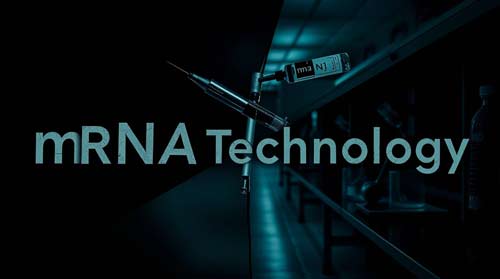
Challenges and Limitations
Despite these benefits, several obstacles remain. One big challenge is that many mRNA vaccines need ultra-cold storage, usually between −70°C and −80°C. It makes distribution challenging, especially in rural or low-resource areas.
Cost is another consideration. The production of mRNA vaccines, especially in their current forms, tends to be more expensive than conventional vaccines. It may affect their availability in regions with limited healthcare budgets.
Public perception also presents a barrier. The novelty of mRNA technology, coupled with misinformation and mistrust in some communities, can lead to vaccine hesitancy. Finally, while early safety and efficacy data are promising, long-term effects are still being studied. Continued monitoring and research are essential to fully understand the duration of immunity and potential rare adverse effects.
Applications Beyond Infectious Diseases
Cancer Treatment
mRNA technology is being developed not only for prevention but also for therapeutic purposes, particularly in cancer. These vaccines help the immune system spot and attack tumor cells. They do this by targeting proteins that are specific to cancer. Clinical trials are testing these in several cancers. These include melanoma, non-small cell lung cancer, colorectal cancer, and breast cancer. mRNA technology can create vaccines that match the unique traits of a patient’s tumor. It could lead to more precise and personalized cancer treatments.
Autoimmune Disorders
In autoimmune diseases, where the immune system mistakenly attacks the body’s own tissues, mRNA therapies could play a role in re-educating immune cells. Approaches under investigation include inducing tolerance to self-antigens, regulating overactive immune pathways, and supplying deficient proteins. Early research shows promise for conditions like multiple sclerosis and type 1 diabetes. It suggests a possible role in changing how the immune system works.
Rare Genetic Disorders
mRNA-based treatments may also offer solutions for rare genetic disorders, which are often caused by mutations that impair the production of essential proteins. By delivering genetic instructions to produce these proteins, mRNA therapies could temporarily restore normal function. Moreover, researchers are exploring ways to use mRNA to correct mutations or influence gene expression. For patients with few or no existing treatment options, this technology holds the promise of meaningful clinical benefit.
Comparison with Traditional Vaccine Technologies
Compared to traditional vaccines, mRNA vaccines offer several compelling advantages. Their fast development cycle helps them respond quickly to health threats. Their ability to scale up means they can efficiently produce large quantities once manufacturing starts. The technology’s adaptability means that updates to vaccines can be made with relative ease, making it well-suited for fast-evolving viruses. Furthermore, the absence of live virus components contributes to a favorable safety profile.
However, traditional vaccines maintain certain advantages. They have a well-established history of use, with extensive long-term safety and efficacy data. They also often have less demanding storage requirements, making them easier to distribute in resource-limited settings. In some cases, they are more cost-effective to produce, particularly where infrastructure for conventional vaccine manufacturing is already established.
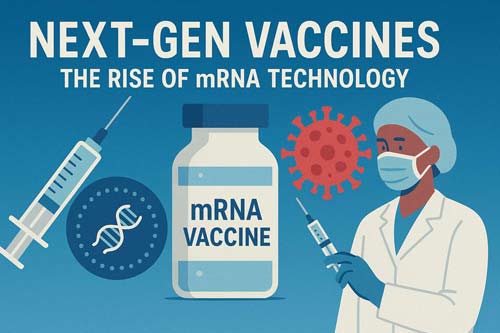
Future Outlook
The demonstrated success of mRNA vaccines during the COVID-19 pandemic has laid a strong foundation for continued innovation. Future developments will probably target better storage stability, which will allow for easier distribution and reduce production costs. These efforts will help make the technology accessible to more people worldwide. Research is expanding into areas such as personalized medicine, rare disease treatment, and therapeutic vaccines for chronic conditions.
There is also growing interest in the development of combination vaccines using mRNA platforms to target multiple diseases within a single shot. Another promising area is self-amplifying mRNA. This newer technology has the potential to strengthen immune responses. It can also reduce the dosage needed, which may enhance vaccine efficiency.
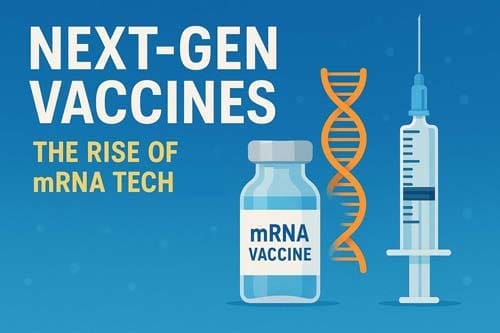

Conclusion
mRNA vaccine technology represents a significant leap forward in biomedical science, with applications that extend well beyond the COVID-19 pandemic. This platform offers a flexible and strong tool for the future of medicine. It can help with cancer, autoimmune diseases, and rare genetic disorders. Challenges still exist, especially with cost, storage, and public acceptance. However, ongoing research and development will likely overcome many of these issues. As innovation continues, mRNA vaccines are poised to play a pivotal role in shaping global health strategies for years to come.
Frequently Asked Questions:
- How do mRNA vaccines differ from traditional vaccines? mRNA vaccines work by delivering genetic instructions that prompt cells to produce a specific protein associated with a virus or other disease-causing agent. This protein activates an immune response. It trains the body to identify and fight the actual pathogen if it is encountered. Unlike traditional vaccines, mRNA vaccines do not use live or weakened viruses, making them potentially safer and faster to produce.
- Are mRNA vaccines safe for immunocompromised patients? mRNA vaccines don’t have live components. So, they are usually safe for people with weakened immune systems. However, while the risk of adverse events is low, the immune response in these patients may be reduced. Therefore, vaccination decisions should be based on an individual risk-benefit assessment conducted by a healthcare provider.
- What are the storage requirements for mRNA vaccines? Many first-generation mRNA vaccines require ultra-cold storage temperatures, typically between -70°C and -80°C, to maintain stability. It has posed logistical challenges, particularly in low-resource or remote settings. However, newer formulations are being developed that can be stored at standard refrigeration temperatures, improving accessibility and distribution.
- Can mRNA vaccines alter a person’s DNA? No, mRNA vaccines cannot alter a person’s DNA. The mRNA does not enter the cell nucleus, where DNA is located, and it does not integrate with genetic material. Once the protein is produced, the body breaks down the mRNA within a short period.
- How long does immunity from mRNA vaccines last? The duration of immunity varies depending on the disease target, the specific vaccine, and the individual’s immune system. For example, immunity to COVID-19 has been shown to wane over time, leading to the recommendation of booster doses. Ongoing studies are evaluating how long protection lasts across different mRNA-based vaccines.
- Are there any contraindications for mRNA vaccines? The main reason not to use this vaccine is a history of severe allergic reactions, such as anaphylaxis, to any of its components. It includes polyethylene glycol (PEG), which is in some mRNA vaccines. Before administration, healthcare providers should review a patient’s medical history to identify potential risks.
- Can mRNA vaccines be used in pregnancy and lactation? Current data indicate that mRNA vaccines are safe for use during pregnancy and lactation. Clinical studies and real-world surveillance have not shown any increased risk to mothers or infants. Nonetheless, it remains essential to conduct an individualized risk-benefit discussion with each patient, especially those with complex medical histories.
- How quickly can new mRNA vaccines be developed for emerging diseases? One of the most significant advantages of mRNA vaccine technology is its rapid development timeline. Once the genetic sequence of a pathogen is known, a vaccine candidate can be designed within weeks. This was demonstrated during the COVID-19 pandemic. However, while development is fast, the vaccine must still undergo rigorous preclinical testing, clinical trials, and regulatory approval before widespread use.
- Are there any long-term side effects of mRNA vaccines? Long-term safety monitoring is ongoing, but to date, no significant long-term adverse effects have been identified. Most side effects occur shortly after vaccination and are temporary. As with all medical interventions, ongoing surveillance and research are essential to detect any rare or delayed effects.
- How do mRNA cancer vaccines differ from preventive mRNA vaccines? Preventive mRNA vaccines aim to protect against infectious diseases by priming the immune system against viruses or bacteria. In contrast, mRNA cancer vaccines are therapeutic and designed to stimulate the immune system to recognize and destroy cancer cells. These vaccines often target tumor-specific antigens, allowing for a more personalized approach to cancer treatment.
- Can mRNA vaccines be combined with other vaccine types? Research is actively exploring the potential for combination vaccines that include mRNA components alongside traditional vaccine technologies. This approach may enhance immune responses and provide broader protection, such as targeting multiple diseases in a single dose or combining preventive and therapeutic strategies.
- How do healthcare providers stay updated on new developments in mRNA vaccine technology? Healthcare providers are encouraged to follow guidance from reputable organizations such as the Centers for Disease Control and Prevention (CDC), the World Health Organization (WHO), and national health authorities. Peer-reviewed journals, medical associations, and accredited continuing education programs are also valuable sources of up-to-date information on mRNA vaccine research and clinical applications.
References:
- Alameh, M. G., Weissman, D., & Pardi, N. (2020). Messenger RNA-Based Vaccines Against Infectious Diseases. Current Topics in Microbiology and Immunology, 440, 111–145. https://pubmed.ncbi.nlm.nih.gov/32300916/(Perelman School of Medicine)
- Corbett, K. S., Edwards, D. K., & Leist, S. R. (2020). SARS-CoV-2 mRNA vaccine design enabled by prototype pathogen preparedness. Nature, 586(7830), 567–571. https://www.nature.com/articles/s41586-020-2622-0(Scholars@Duke)
- Pardi, N., Hogan, M. J., Porter, F. W., & Weissman, D. (2018). mRNA vaccines—a new era in vaccinology. Nature Reviews Drug Discovery, 17(4), 261–279. https://www.nature.com/articles/nrd.2017.243(Nature)
- Sahin, U., Karikó, K., & Türeci, Ö. (2014). mRNA-based therapeutics—developing a new class of drugs. Nature Reviews Drug Discovery, 13(10), 759–780. https://www.nature.com/articles/nrd4278(Nature)
- Verbeke, R., Lentacker, I., De Smedt, S. C., & Dewitte, H. (2019). Three decades of messenger RNA vaccine development. Nano Today, 28, 100766. https://www.sciencedirect.com/science/article/pii/S1748013219301483
